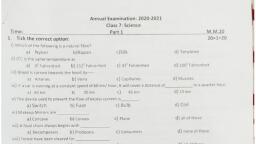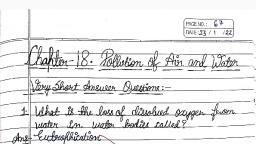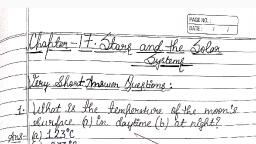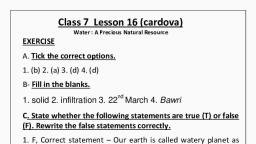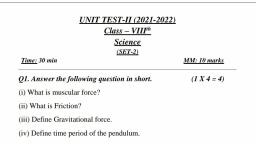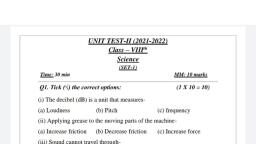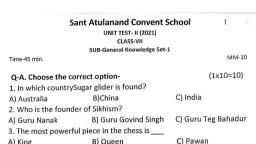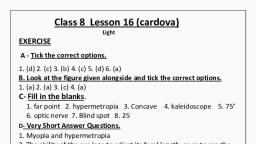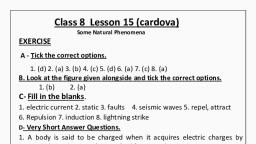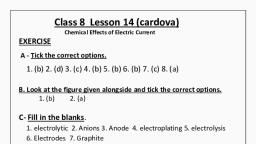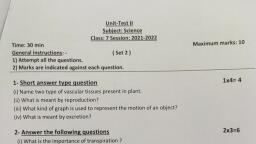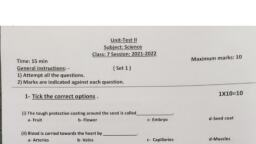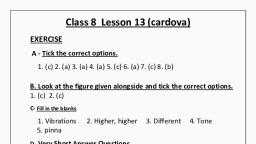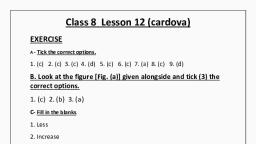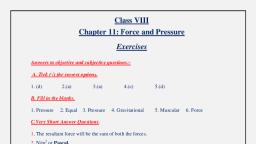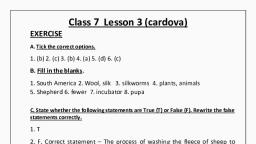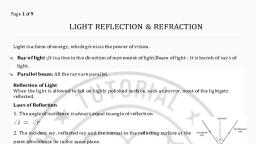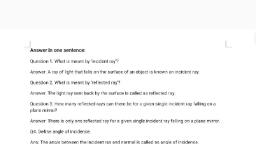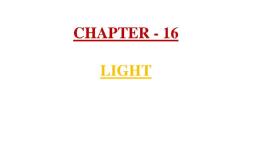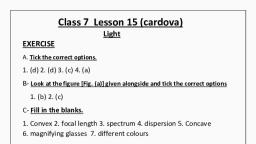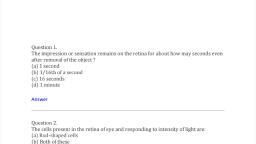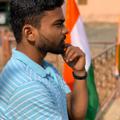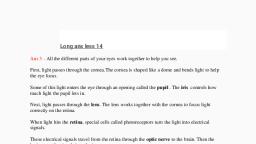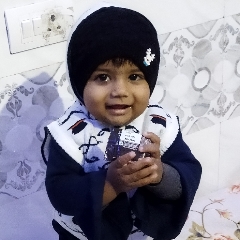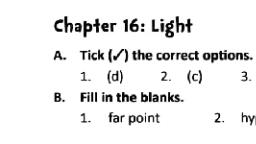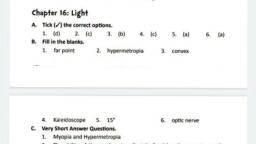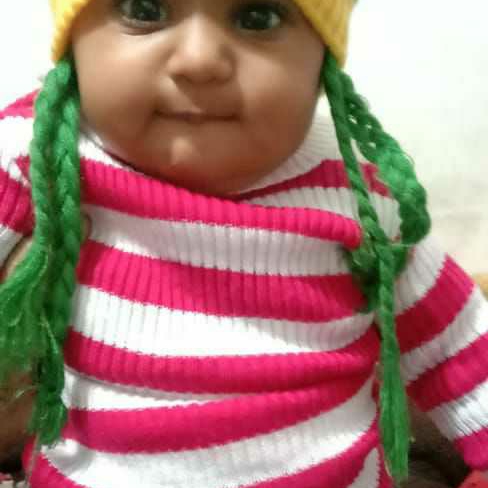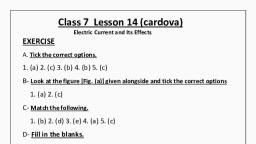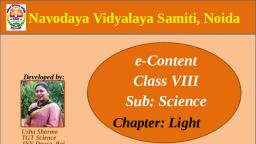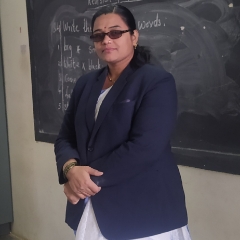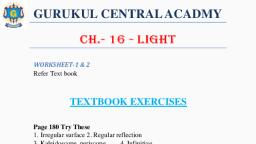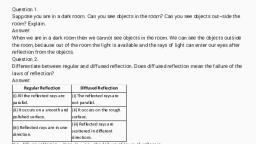Page 1 :
Class 8 Lesson 16 (cardova), Light, , EXERCISE, A - Tick the correct options., 1. (d) 2. (c) 3. (b) 4. (c) 5. (d) 6. (a), B. Look at the figure given alongside and tick the correct options., 1. (a) 2. (a) 3. (c) 4. (a), , C- Fill in the blanks., 1. far point 2. hypermetropia 3. Concave 4. kaleidoscope 5. 75°, 6. optic nerve 7. Blind spot 8. 25, D- Very Short Answer Questions., 1. Myopia and hypermetropia, 2. The ability of the eye lens to adjust its focal length, so as to see the, objects located anywhere is called the power of accommodation., 3. The near point of a normal human eye is about 25 cm., 4. 60°, 5. It is the combination of raised dots in a six-dot ‘cell’ that make up, different characters., E. Short Answer Type -1 Questions., , 1. The laws of reflection are as follows :, (a) The angle of incidence is equal to the angle of reflection., (b) The incident ray, the normal at the point of incidence and the, reflected ray, all lie in the same plane., , 1|Page
Page 2 :
Class 8 Lesson 16 (cardova), Light, , 3. The process of sending back the light rays which fall on the surface of, an object is called reflection of light., 4. The phenomenon of splitting of white light into its component colours, on passing through a transparent medium like a glass prism is called, dispersion of light., 5. The band of seven colours formed on a white screen, when white light, passes through prism (or any transparent medium) is called spectrum, of white light., F. Short Answer Type-II Questions., , 2|Page
Page 3 :
Class 8 Lesson 16 (cardova), Light, , 3. A person with hypermetropia or far-sightedness can see distant, (far off) objects clearly but cannot see nearby objects distinctly. It is, caused when image of a nearby object is formed behind the retina and, not at the retina itself. It is corrected by using spectacles with a convex, lens., 4. (a) The condition when either the cornea or the eye lens become, opaque due to some diseases or defects and a person cannot see, is, known as curable blindness. It can be cured., (b) No, it is not right to make fun of visually challenged people. If we, make fun of them, they may get hurt and we should never hurt the, feelings of other people. We should never behave with people in a way, we don’t want others to behave with us., , G. Long Answer Questions., 1. (a) Incident ray: The ray of light which falls on the mirror’s reflecting, surface is called incident ray., (b) Reflected ray: The ray of light which is sent back after reflection by, the mirror surface at the point of incidence is called reflected ray., 3|Page
Page 4 :
Class 8 Lesson 16 (cardova), Light, , (c) Normal at the point of incidence: The ‘normal’ is a line drawn at, right angle to the mirror surface at the point of incidence., (d) Angle of incidence: The angle which the incident ray makes with, the ‘normal’ at the point of incidence is called the angle of incidence., (e) Angle of reflection: The angle which the reflected ray makes with, the ‘normal’ at the point of incidence is called the angle of reflection., 2. (a) Sclera: It protects the vital internal parts of the eye from external, injuries., (b) Cornea: It allows the light to enter into the eyeball., (c) Iris: It regulates the amount of the light entering the eye by, adjusting the size of the pupil., (d) Choroid: It darkens the eye from inside and prevents any internal, reflection., (e) Retina: It contains rods and cones which are sensitive to light. The, cones are sensitive to colour while the rods are sensitive to the, intensity of light., H. HOTS (Higher Order Thinking Skills) Questions., , 1. If a student is unable to read a book it shows that the student is, suffering from hypermetropia (far-sightedness) so cannot see close, objects properly. It can be corrected by using convex lens in the, spectacles., 2. Myopia (short-sightedness). It can be corrected by using concave lens., , 4|Page

